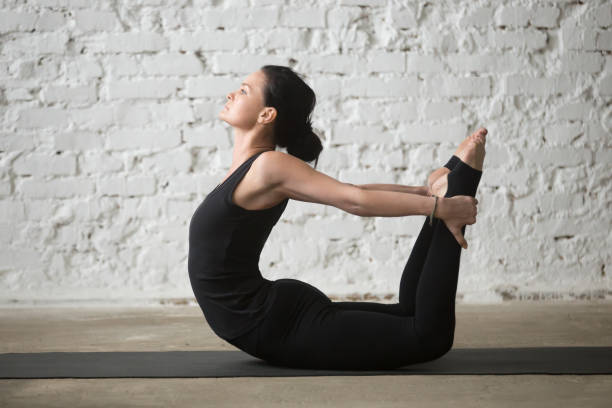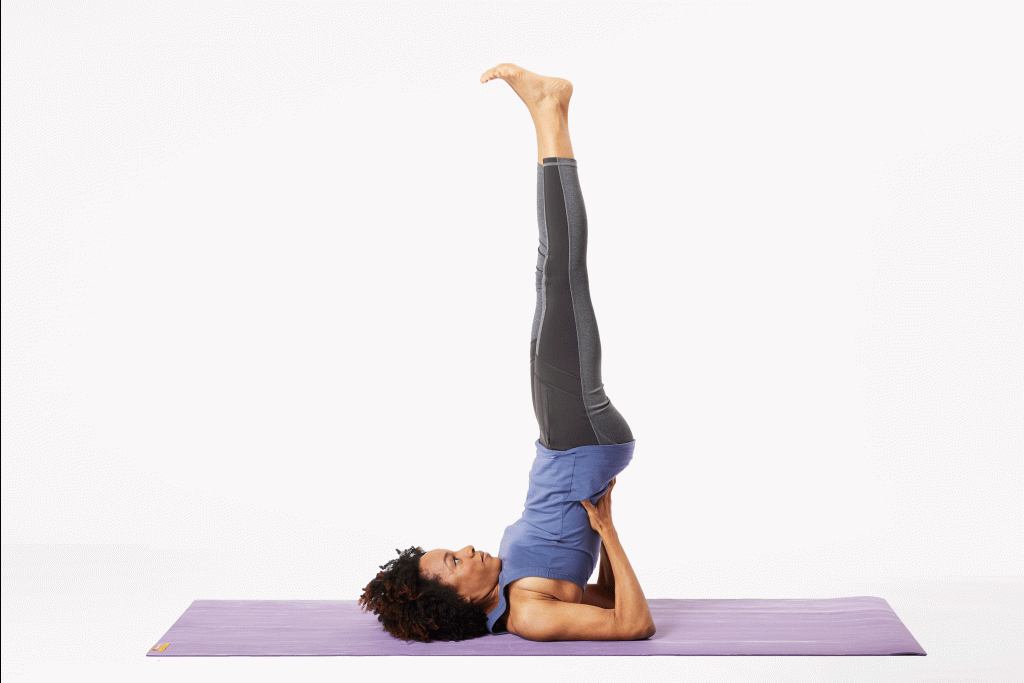The New Year is all about starting fresh! Kickstart your yoga practice with these energizing and invigorating poses that will help prepare your body and mind for the coming year. Here are 5 yoga poses for new beginnings.
1. Crescent Lunge
From Downward Facing Dog, step your right foot forward in between your hands. First, perch onto your fingertips and lengthen your spine. Then, come upright and reach the arms up.
Ground down through your right foot. Hug your right hamstring into the quadricep, then engage your inner thighs. Next, lengthen your left heel to the back of your mat and straighten your left leg.
Soften the tailbone down and pick up your low belly. Hug the ribcage in. Straighten your arms fully, then feel energy travel up through the fingers. Feel the side body engage.
Stay here for 5-8 breaths. You may also come into Revolved Crescent Lunge, if you’d like to reap the benefits of twists. Then, slowly bring the hands down and step your right leg back into Downward Facing Dog.
2. Locust Pose
Lay prone on your belly. Root the hip bones down onto your mat, then lengthen your arms behind you with the palms facing up. Point the toes back, squeeze the inner thighs, then firm up your glutes.

On an inhalation, lift your arms, shoulders, and chest up from the mat. Then, lift your feet and your shins up. Feel the extension in your spine. Keep the neck long, and bring your gaze to the top edge of the mat.
Stay here for a few breaths, actively squeezing the back muscles and feeling them engage. Then, lower the limbs and the chest back to the earth. Rest on one cheek. Do 2-3 more reps of this. Salabhasana, or Locust Pose, helps strengthen the back body and open up the front body.
3. Bow Pose
Added to these yoga poses for new beginnings is another generous backbend. After doing Locust Pose, bring your heels into your bum. Reach one hand towards the ankle of the same side, and reach the other hand towards the other ankle. Press the pubic bone down to your mat, then lift your chest and your shoulders up.
Press the ankles into your palms, and actively lift your quadriceps away from the floor. Squeeze the inner thighs together, making sure that your legs aren’t splaying out and that your lower back is protected. Breathe, and widen your collarbones.

Dhanurasana, or Bow Pose, is a deeper backbend compared to Locust Pose. If you find that this shape is too intense, feel free to simply stay in Locust.
When you are ready, release the pose and take Child’s Pose to help counter the previous two backbends.
4. Revolved Head-to-Knee Pose
This yummy stretch will help open up your hips and create space across the side body. Bring your legs out into a wide straddle. Then, bring the sole of your right foot against your left inner thigh. Flex the left foot and dig the left heel down to the mat, keeping it engaged the entire time.
Take your left hand onto your left shin, then reach your right arm up and over your right ear. Take a gentle side bend to the left side, keeping the hips grounded and fully extending your right arm to maximize the stretch.

You don’t need to touch your left foot! The purpose of this stretch is to simply connect with your body and unwind any pent-up tension. Stay here for a few breaths. Relax and enjoy, before switching to the next side.
5. Shoulderstand
Lie down on your mat and straighten your legs up to the sky. Then, use your low belly strength to bounce the hips up. Catch your hips with your hands, then walk your elbows in so that they’re hugging your ribcage.
Walk the hands down, so that they move closer to your mid-upper back. Then, lengthen your tailbone to the sky (as you would in Headstand). Try to straighten your legs up and point your toes to the ceiling.

If you would like to take this pose further, come into Halasana by softening your legs and draping them over your ears. If you have a hard time bringing your hips up to the sky, consider facing a wall and walking your feet up the wall for added support. You can also just do Viparita Karani.
This inversion helps stretch the shoulders and the neck, improves digestion, and reduce fatigue. After staying here for 8 to 10 breaths, simply bring your knees to your chest and slowly roll the spine back down.
After Shoulderstand, don’t forget to do Matsyasana or Fish Pose as a counterpose. Then, rest in Savasana. These yoga poses for new beginnings will help invite good energy as we move into 2022. Happy New Year!




